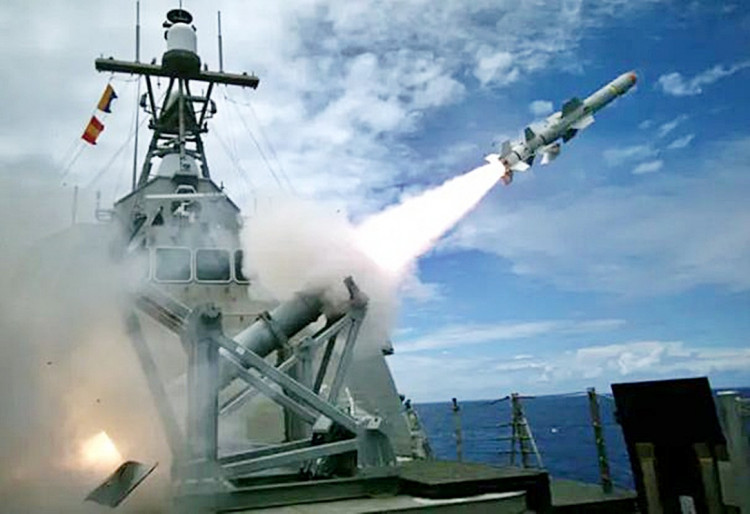The U.S. Navy says China presents the greatest maritime military threat and that its main mission is to curtail this.
The Navy made its case for confronting China in a document called "China Naval Modernization: Implications for U.S. Navy Capabilities-Background and Issues for Congress."
It said the People's Liberation Army Navy was now the main challenge to its ability "to achieve and maintain wartime control of blue-water ocean areas in the Western Pacific - the first such challenge the U.S. Navy has faced since the end of the Cold War."
The modernization and buildup of China's navy is a central element of communist China's challenge to the long-standing status of the U.S. as the leading military power in the Western Pacific.
Twenty-five years of spending by China has seen its navy become a formidable military force within China's near-seas region and its ships are conducting operations in more-distant waters - including the western Pacific and Indian Oceans.
China's naval buildup will eventually see its presence not only in the Indo-Pacific but also in Europe, the report said.
The U.S. Navy said China's military modernization was now the main concentration for U.S. defense planning and budgeting. This modernization has resulted in China's navy surpassing the U.S. in numbers of ships. China's navy is not the largest in the world.
The U.S. Navy's Office of Naval Intelligence said China had 360 ships compared with 297 for the U.S. Navy as at October.
The office estimates China will have 400 battle force ships by 2025 and 425 by 2030. It also said China's ships, aircraft and weapons are more modern and capable than in the 1990s.
"Chinese naval ship design and material quality is in many cases comparable to that of the U.S. Navy and China is quickly closing the gap in any areas of deficiency."
The Navy is meeting the China challenge with all the resources at its disposal. The report said the Navy in recent years has taken action to counter China's naval modernization. Among these are shifting a larger part of its fleet and personnel to the Pacific.
The Navy has maintained or increased operations, training and engagement and cooperation with allied and other navies in the Indo-Pacific.
It has accelerated development of military technologies and weapons, ships, aircraft and unmanned surface and underwater vehicles.
It has also begun developing new operational concepts - such as new ways to employ Navy and Marine forces - to counter China's maritime forces.






